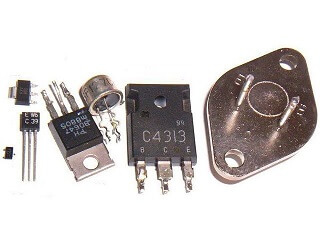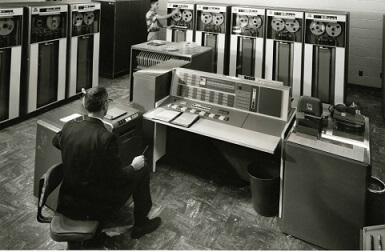Second Generation of Computer
During the late 1950s and 1960s, the interest in computer technology got fast, and the next generation of the computer, second, was introduced that replace vacuum tubes and used transistors. The computers made in the second generation were completely based upon transistors, not on vacuum tubes. Until the late 1950s, the use of transistor did not see widespread in computers; however, it was invented at Bell Labs by Walter H. Brattain (1902-1987), John Bardeen (1908-1991), and William B. Shockley (1910-1989) in 1947. It was evident to many by 1948, the vacuum tube would probably replace by a transistor in the devices such as television sets, computers and radios. The below image represents that how looks the transistors.

As compared to the vacuum tube, the transistor was far better through which made possible computers to become more reliable, smaller in size, faster in speed, more energy-efficient, and cheaper comparing to the first generation of computers. The used of transistor was a more useful and massive improvement over the vacuum tube. However, it was subjected to damage the computer because transistor generated a great deal of heat. Additionally, in the computers of second generation, punched cards and printouts were used for inputs and outputs. The TX-0 was the first computer that used transistors. It was released in 1956. RCA 501 is another example that used transistors.
Because of the arithmetic circuits and the set of index registers, the second generation of computers is some different from the computers made in the first generation, which used vacuum tubes. The computers made in the second generation contain isolate input and output operations that led to managing both fixed-point and floating-point operations with the help of this circuit.
Moreover, Philco Corporation’s Transac S-2000 was one of the first computing machines on the basis of the transistor, which was introduced in 1958. Soon, IBM 7090 was released by IBM that was entirely based upon the transistor, which was the most powerful data processing system at that time. These second-generation machines were used for a wide variety of business and scientific jobs and used high-level programming and assembly languages such as FORTRAN (Formula Translator) and COBOL (Common Business Oriented Language). For data storage, these computers often used tape and magnetic disks. And, they used a multiprogramming operating system and batch processing. Some other examples of the second generation of computers include UNIVAC 1108, CDC 1604, Honeywell 400, CDC 3600 and more. The picture given below is an instance of an IBM 7090 system.

As compared to IBM’s vacuum-tube predecessor, the IBM 709, the IBM 7090 has six times faster computing speed as it fully transistorized system. Although the IBM 7090 was specially designed for the design of jet engines, missiles, supersonic aircraft and nuclear reactors, as it was a general-purpose data processing system. In the IBM 7090, an advanced, extremely fast magnetic core storage and over 50,000 transistors were included. When eight data channels are in use, the new system has the ability to read and write 3,000,000 bits per second in one go. In the magnetic core storage, it has the ability to find and make ready for using any of 32,768 data or instruction numbers in 2.18 millionths of a second. Additionally, the following operations can be performed by the IBM 7090 in one second: 229,000 additions or subtractions as well as 39,500 multiplications, or 32,700 divisions.
Features of the Second Generation of Computers
The second-generation computers had several features, which are as follows:
- As the computers made in the second generation used transistors that made them more reliable, smaller in size, faster in speed, more energy-efficient, and cheaper compared to the first generation of computers.
- They contain magnetic storage disks and magnetic core memory.
- They used high-level languages such as Fortran and Cobol and allowed communication with the help of a telephone line.
- The speed and reliability were improved in the second-generation computers as compared to the computers made in the first generation; the data processing time reduced from milliseconds to microseconds.
Advantage and disadvantages of second-generation computers
The second generation of computers were designed with multiple advantages for the computer world and the users as the transistor technology was used to make them. For instance, the technology used in the computers made in the second generation led to computers smaller in size, better portability, more reliable, consumed less power comparing to computers made in the first generation. Also, they were faster in speed, and it could improve accuracy and automation and be able to calculate data in microseconds.
However, these computers also came with some disadvantages for the users and the computer world. For example, they still needed air condition in the computer’s room even if the technology used in second-generation computers generated less heat. Also, they required constant maintenance. Additionally, although the second generation of computers was endurable, they were not more versatile. And, they were popular same as the computers of first generation, but they were more costly as it was not easy to create and buy the part to make a transistor as well as to use it. Below, a table contains all point of advantages and disadvantages of second-generation computers:
| ADVANTAGES | DISADVANTAGES |
|---|---|
|
|
